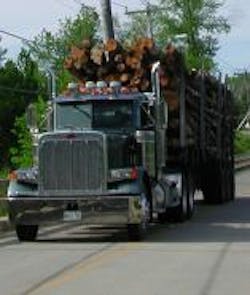Increasing truck weight suffers setback
Support for increasing weight limits has been gaining ground in the last several years for a number of reasons, including improving productivity, increasing safety due to fewer trucks on the road, and environmental reasons.
And just as that support continues to grow, proponents of the higher weight limits suffered a setback on Wednesday night when the U.S. House of Representatives stripped out a provision in a funding bill that effectively kills the state of Maine’s pilot program to allow trucks up to 100,000 lbs. on Federal Interstate highways in that state.
The provision had been included in a bill known as a Continuing Resolution (CR). The CR provides funding for programs through Sept. 30, 2011.
The pilot program will end at the end of the day on Dec. 17, forcing carriers in Maine to make some quick decisions.
“Permanently allowing the heaviest trucks to use federal Interstate highways in Maine has always been one of my top priorities,” Collins said in a press release. “The pilot project, that I authored, has clearly provided economic, energy, and environmental benefits and has made our secondary roads and many downtowns safer. That is why the President agreed to my request to include a provision to make the pilot project permanent in his proposed CR.”
The pilot program, begun last December, allowed six-axle trucks weighing up to 100,000 lbs. to travel in Interstates in Maine, including I-95, I-195, I-295, and I-395.
Collins’ office released the results of a preliminary study conducted by the Maine Dept. of Transportation that said the program saved both money and time while improving safety.
“For example, on a trip from Hampden to Houlton, a truck travelling on Interstate 95 saves 50 minutes over Route 2 and avoids more than 270 intersections and nine school crossings. The driver also saves approximately $30 on fuel by traveling on the Interstate,” the report stated.
Collins, who is on the Senate Appropriations Committee, has tried to work with the Administration to make the program permanent.
Just last week, experts speaking at the “Moving the World: The Future of Freight Transportation,” forum in Washington DC addressed the issue of heavier trucks and the role they can play in a more efficient supply chain.
“Truck productivity is limited by policy in this country, not technology,” said John Woodrooffe, director of the transportation safety analysis division at the University of Michigan’s Transportation Research Institute (UMTRI). “Size and weight policy is frozen by politics and what we’re saying is let science guide policy instead.”
John Runyan, executive director of the Coalition for Transportation Productivity, said the climate for allowing heavier trucks is changing.
“The political reality surrounding this issue is shifting,” he noted at the conference. “Two years ago, when we started our group in the wake of the summer fuel price surge, I would never have thought states like Maine and Vermont would be pilot-testing heavier trucks on their highways.
“But the political landscape has shifted due to this conflux of environmental, fuel consumption, and highway congestion,” he added. “So we have a shot at this.”
Increasing truck weights still has a shot to win the war, but at least one battle seems to have been lost.
